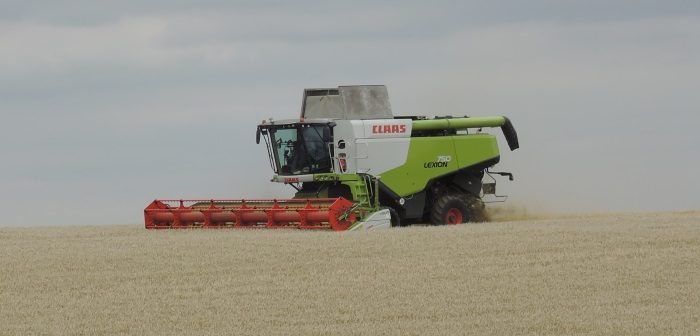The drop in the value of the pound since the EU referendum vote may have given commodity prices a boost, but lower yields mean that the returns from harvest 2016 are set to be only marginally better than in 2015.
Strutt & Parker has produced 2016 projections for its annual Contract Farming Agreement Survey.
The analysis shows that despite a fall in variable costs of around £30/ha, mainly due to lower spending on fertiliser, the average income to the farmer is expected to be around £311/ha while the average income to the contractor is expected to be £319/ha.
This compares to £300/ha to the farmer and £315/ha to the contractor in 2015.
“The income earned by farmers and contractors from Contract Farming Agreements (CFAs) remains under pressure, according to the provisional results for 2016,” said Strutt & Parker farming consultant George Badger.
“This is mainly due to lower yields at harvest 2016 – typically 15% lower than in 2015 (although they were around the five-year average). Commodity prices and support payments have been slightly higher because of currency, but this doesn’t look to be enough to make up for the reduced yields.”
Changing trends
Mr Badger highlighted the usefulness of looking back at how CFAs had performed over time to identify the trends, as people renegotiated or established new agreements.
“If the long-term performance of agreements is examined, then since 2007 the farmer has received an income comparable with a typical rent under a three-or five-year Farm Business Tenancy,” he said.
“This highlights why they remain a popular option for farmers who want to reduce the amount of physical farm work done and the amount of working capital needed, while retaining management control and the tax benefits associated with being a trading farmer.
“However, agreements need to work for both parties, which is why we have seen a move over the past three years to offer greater certainty about the income the contractor will receive by paying a higher contractor’s charge than in the past.
“Five years ago a contractor’s charge was typically £230-240/ha, but this has now increased to around £270/ha. When our survey began in 2007, the contractor’s charge was set at about £200/ha.”
Mr Badger said he was also now seeing greater joint-working between farmers and contractors, to identify opportunities to boost income or cut costs.
“This might involve switching the least profitable or most challenging areas of the farm to Countryside Stewardship or re-examining how crops are marketed,” he said.





